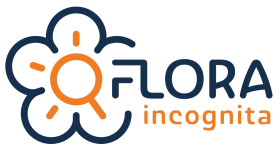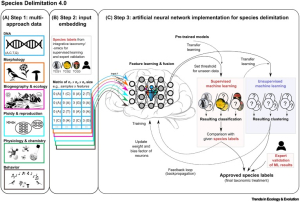New Publication: Species Delimitation 4.0
What is a species? How have species been defined in the past, and how will they be described in the future? How many species are there on Earth? How many are undiscovered? Can we describe them faster than they become extinct due to climate change or human impact?
From the time of Greek philosophers like Aristotle to Charles Darwin and Lamarck to the present day, scientists have been pondering these fundamental questions. However, in contrast to public perception, they largely remain unresolved.
Nowadays, modern genomics teaches us that what we call species can be ill-founded entities due to solely morphology-based, regional species descriptions from the past. This is particularly true for animal, plant, and fungal groups characterized by intricate evolutionary processes such as hybridization or asexuality. Here, challenges of integrative taxonomy (genomics + morphology + ecology, etc.) become apparent: >30 species concepts, lack of universal characters/markers, missing appropriate analytical tools for large datasets and intricate evolutionary processes, and highly author-dependent integration of data.
To tackle this, an interdisciplinary (biologist, computer scientists) and international (Germany, Spain, China, and USA) research team of research led by Dr. Kevin Karbstein, Lara Kösters, Dr. Ladislav Hodač, Martin Hofmann, Dr. Jana Wäldchen, and Prof. Dr. Patrick Mäder from the Max Planck Institute for Biogeochemistry and the Technical University of Ilmenau apprehended these issues and created an innovative review article that has now been published in the highly renowned journal Trends in Ecology and Evolution (TREE; Open Access Link: https://www.cell.com/trends/ecology-evolution/fulltext/S0169-5347(23)00296-3).
The authors present a vision of modern integrative taxonomy under a unified species concept combined with artificial intelligence (deep learning) – it integrates the discovery of genetic entities with the fusion of automatically extracted information such as morphology, physiology, ecology, or behavior to uncover species as natural entities. In this way, artificial intelligence can help accelerate the unraveling of biodiversity on a scale not seen before.


